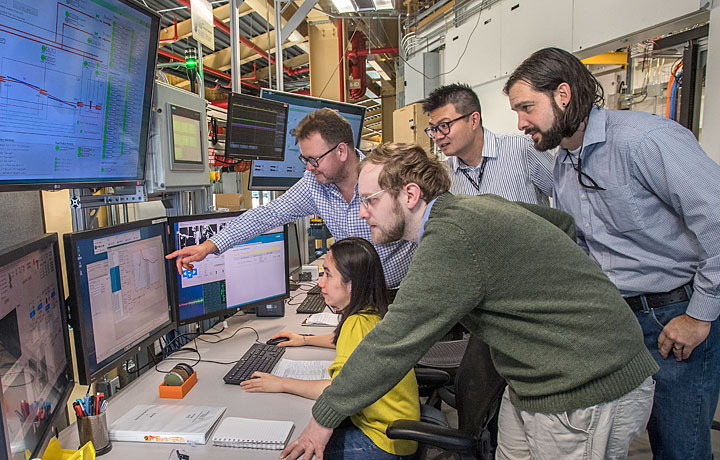Synchrotron Tools Aid NETL Research On Converting CO2 Into Useful Products
March 8, 2019
The following story was originally published by the National Energy Technology Laboratory. For more information on Brookhaven’s role, contact Stephanie Kossman (skossman@bnl.gov).
NETL researchers studying the chemical conversion of carbon dioxide (CO2) into useful products are using powerful X-rays available at U.S. Department of Energy (DOE) facilities to shed light on the process.
A team of NETL research staffers — including Douglas Kauffman, Thuy-Duong Nguyen-Phan, Christopher Marin and Congjun Wang — was recently awarded highly competitive, proposal-based experiment time at Brookhaven National Laboratory’s (BNL) National Synchrotron Light Source II (NSLS II) X-ray facility in Upton, New York. With help from BNL Staff Scientist Eli Stavitski, the team conducted advanced X-ray characterization techniques Feb. 18-19 to study materials that chemically convert CO2 into value-added products.
A synchrotron light source is an extremely bright light that produces X-rays about 100 million times brighter than those used for medical imaging. NSLS II is one of five DOE synchrotron facilities nationwide to offer specialized equipment that provides unique insight into a material’s properties based on its reaction to the X-rays.
The in-situ X-ray absorption spectroscopy technique employed by NETL’s team allowed the researchers to monitor the structure of a catalyst, which facilitates the chemical conversion of CO2, under working catalytic conditions. The experimental data helped identify why particular catalysts work well and produced results that will be used to optimize the materials’ formulation and improve overall system efficiency.
These efforts are part of NETL’s ongoing work to design materials that chemically convert CO2 — captured from fossil energy operations — into useful chemicals and products, such as fuels, alcohols, hydrocarbons, carbon monoxide, polymers and plastics. Finding novel ways to put captured carbon to work for America offers opportunities to offset capture costs, stimulate economic investments and ensure responsible stewardship of the environment.
2019-14437 | INT/EXT | Newsroom











